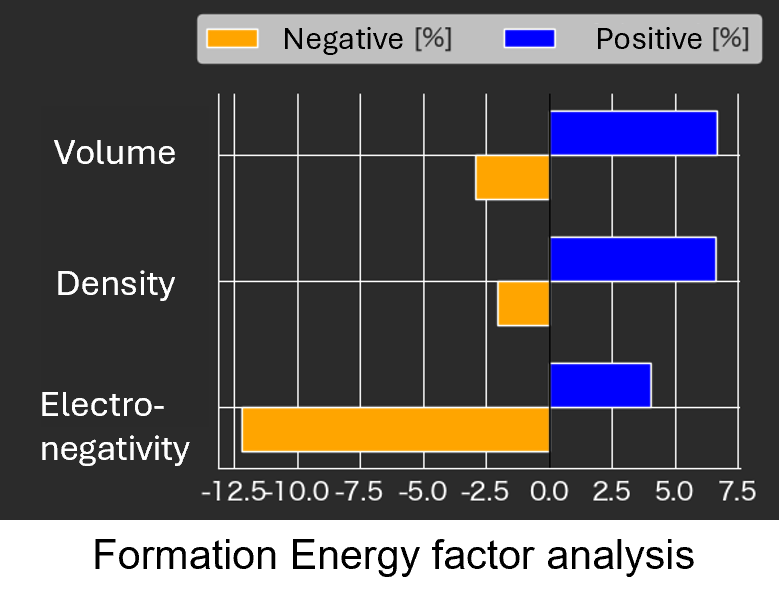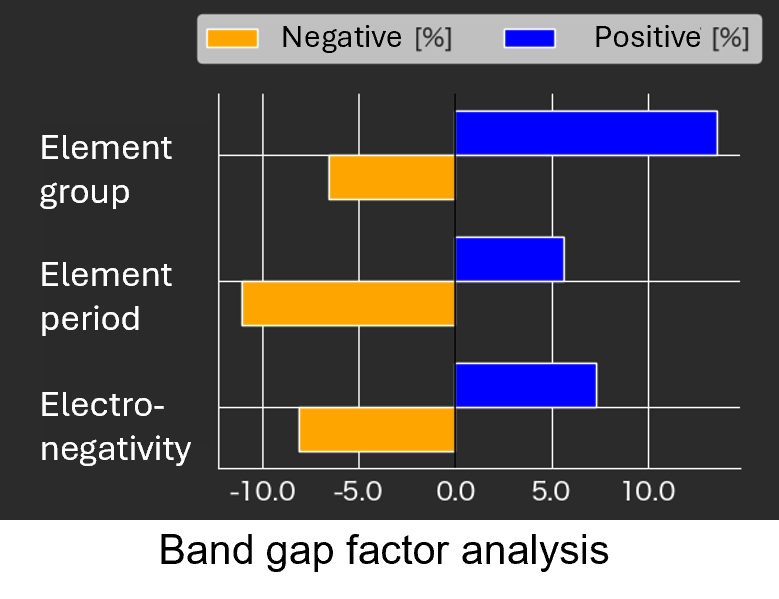Using the AI analysis platform Multi-Sigma®, we will construct a prediction model of formation energy and bandgap based on material descriptors. The models were linked for multi-objective optimization to identify compounds with promising properties for solar cell applications.
1. Formation Energy and Bandgap Prediction
Using Multi-Sigma’s prediction function, we trained models to map material descriptors to properties. Model 1 used electronegativity, period, group, density, and volume to predict formation energy, while Model 2 used electronegativity, period, group, and formation energy to predict the bandgap.

2. Factor analysis
Multi-Sigma’s factor analysis function identifies factors with positive and negative contributions. The figures on the right highlight key factors influencing formation energy and bandgap.


3. Multi-Objective Optimization
Multi-Sigma’s optimization function suggests the optimal parameter combinations to achieve target performance metrics.
- Minimization of formation energy (ensuring long-term stability)
- Achieve a bandgap of around 1.5 eV (optimal light absorption characteristics relative to the sunlight spectrum)
Multi-objective optimization with Multi-Sigma® yielded a promising solar cell material candidate with the following physical properties.


Note: The data used in this analysis is processed and edited based on the data published in the article below, under Creative Commons Attribution 4.0 International (CC BY 4.0) license.
Data source: https://next-gen.materialsproject.org/api
